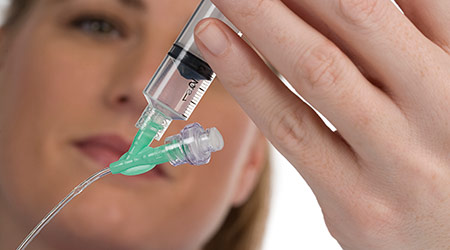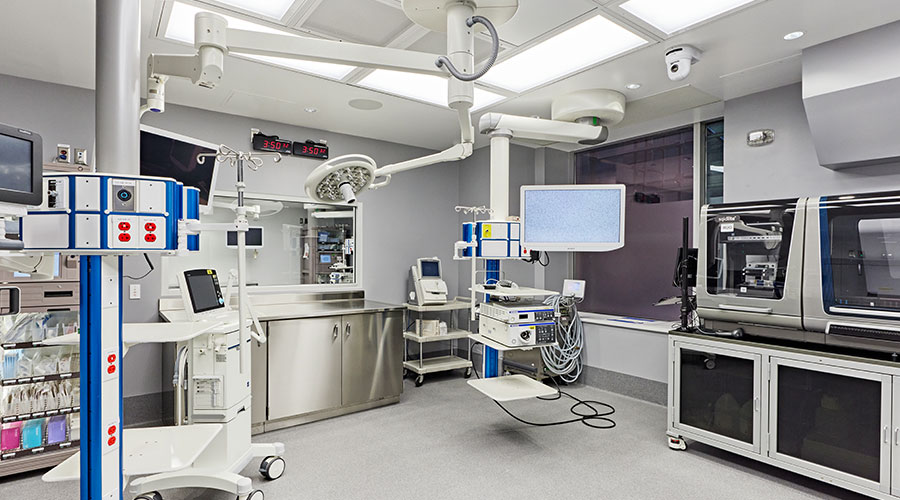Healthcare executives face many challenges when making purchasing choices for a hospital or healthcare facility. There are so many factors to consider, ranging from quality to pricing to patient experience. Are these medical devices made of high quality material? Will they be cost-effective? How long will they last? Will they keep patients safe?
What’s not always clear when making these decisions is what hidden direct and indirect costs could arise from device failure and disruptions to patient care.
Hidden costs, big risks
Beyond the initial purchase price of a piece of equipment, there are many kinds of hidden costs that could arise if that item doesn’t perform like it should. Whether it’s a surgeon having to wait an hour or more for an operating room due to equipment failure or a patient having to wait for a test because of broken diagnostic equipment, the delays in care can cost an enormous amount of resources in terms of labor and time.
“We have to work very hard on throughput. That means when a physician needs to order a test, we have to make sure the equipment is available and that the staff is available to try to provide that service as quickly as possible,” said Alan Levine, executive chairman, president, and CEO of Ballad Health, an integrated healthcare system serving Northeast Tennessee, Southwest Virginia, Northwest North Carolina and Southeast Kentucky. “Our goal is to get you in the hospital, get you diagnosed, treated, and get you home as quickly as possible so that we can contribute as much as we can to your healing.”
Delays in care are more than just a financial issue, they also have a dangerous effect on patient safety. The longer a patient stays in the hospital, the more potential there is for exposure to risk, such as a healthcare associated infection (HAI). HAIs also increase avoidable costs through higher rates of premature death, longer hospital stays, and reduced reimbursements for hospitals with excessive readmissions.
“When a patient has an HAI, all the costs associated with treating that condition are additional and are not reimbursed by Medicare, so there is a big financial burden picked up by the hospital,” said Tim Attebery, president and CEO of Ballad Health’s Holston Valley Medical Center. “The reputation of the hospital is also directly affected to the extent the patient acquires an infection that they didn't have when they came in. You do not want a perception in the community that your hospital is not a clean, safe environment of care.”
These risks mean healthcare professionals are more motivated than ever to use the most effective disinfectants on medical devices — and use them more frequently. However, constant exposure to aggressive chemicals can damage a device’s structure — causing cracks, crazing, discoloration, and stickiness — and contribute to device failure.
Why devices fail
Hospitals must comply with disinfection regulations, which change constantly. Centers for Disease Control and Prevention has recently recommended more stringent disinfecting protocols, and the Food and Drug Administration has issued warnings about using PC and ABS with certain oncology drugs. What’s more, the Joint Commission is now auditing to ensure that disinfectants being used on specific devices are prescribed in Instructions for Use (IFU).
“Every hospital in the U.S. is evaluated based on how well they follow the standards that are promulgated by the Joint Commission, which reflect evidence that has been accumulated over years and years,” said Attebery. “That environment of care needs to adhere to the highest standards for patient safety. We're constantly evaluating: Are we having infections at a rate higher than what we would expect? Are those infections associated with a certain room, a certain condition, or a certain type of patient? If the Joint Commission identifies that we are not adhering to the standards with regard to patient safety and infection prevention, that could jeopardize our Medicare certification.”
Many materials commonly used in medical devices today have a low level of compatibility with new disinfectants and stringent cleaning protocols. Material choice plays a big role in whether a device is successful or fails. A material’s properties, how it is processed, and the environment in which it is used can all factor in to device performance. Making the wrong material selection, poor chemical resistance, high-stress design, or inconsistencies in manufacturing can result in a faulty device.
Medical devices also endure a lot of impact. Every day, device housings and hardware are handled by multiple people, move across many environments, and can get dropped or bumped on hard surfaces. Low chemical resistance combined with a high-stress environment often lead to device failure.
“The hidden cost of that is when the equipment goes down, it's not available to the patient and it costs an enormous amount of money to replace or repair,” said Levine. “A lot of times the results of that are intangible. You don't realize it until you stop to think, and it's an ‘aha!’ moment.”
Creating a change in the system
The current rates of medical device failures are unacceptable and unsustainable for a hospital’s bottom line. Hospitals must be able to invest in well-made devices that can adapt to the increased use of aggressive disinfectants and meet today’s regulatory and safety demands.
Healthcare decision makers can begin changing the conversation around device viability in the Request for Proposal (RFP). Executives could request that more types of disinfectants be approved by the hospital and that device housings and hardware:
• Be made of materials compatible with bleach, alcohol, quaternary ammonium, and hydrogen peroxide when cleaned a certain number of times a day
• Shall maintain integrity when dropped from a height of one meter throughout the device’s expected service life
• Shall maintain integrity when bumped into a wall in the course of normal use throughout the device’s expected service life
• Shall not become sticky to the touch after cleaning with the preceding listed types of disinfectants up to a certain number of times per day throughout the device’s expected service life
Testing devices for durability after disinfection is another important step to creating change. The device manufacturer can start by testing the chemical resistance of materials when exposed to disinfectants, then use a mechanical property retention test to measure how a well-designed device will respond to impact after disinfection.
“As we learn about ways to maintain a clean, safe environment for our patients, we're discovering that the agents we use to sterilize are actually causing an adverse effect on the housing of the equipment,” said Attebery. “As we look at equipment in the future, it's going to be important for us to ask our manufacturers and suppliers whether they’re using materials that are easily cleaned without affecting the functioning of the equipment.”
Healthcare professionals have the opportunity to play an active role in protecting patient safety and keeping operating costs down by demanding better performing materials for medical devices. Indicating what disinfectants are included in IFUs across all the devices in a healthcare system could improve chances of having more successful Joint Commission audits and allow hospitals access to cleaner, safer, long-lasting medical devices.
Ellen Turner is the global market development manager, Medical Devices, Eastman Specialty Plastics.

 Building an Organ Regeneration Lab at UHN's Toronto General Hospital
Building an Organ Regeneration Lab at UHN's Toronto General Hospital Oracle Health Hit by Data Breach, Patient Data Possibly Compromised
Oracle Health Hit by Data Breach, Patient Data Possibly Compromised Ground Broken on New MD Anderson Sugar Land Facility
Ground Broken on New MD Anderson Sugar Land Facility Florida State University Reveals Plans for Panama City Beach Hospital
Florida State University Reveals Plans for Panama City Beach Hospital The Effect of Over-Cleaning on Human Health
The Effect of Over-Cleaning on Human Health